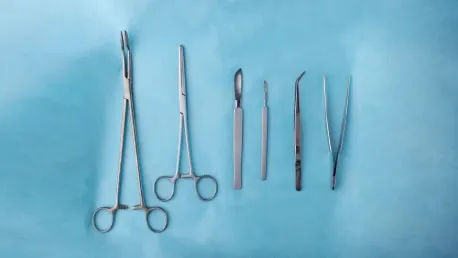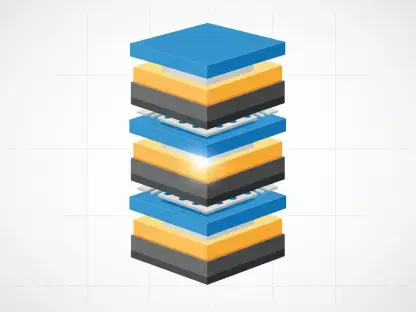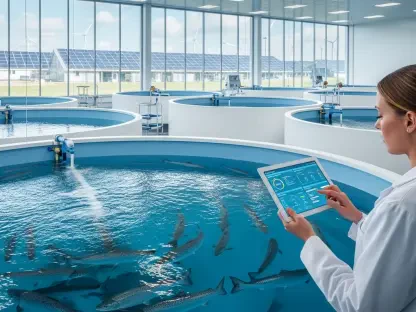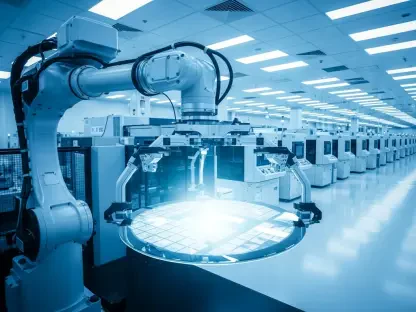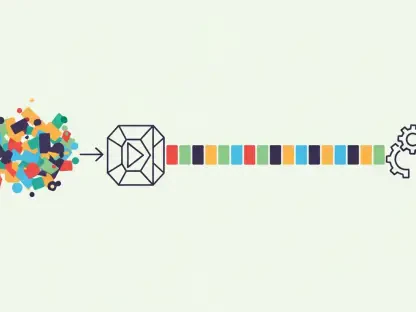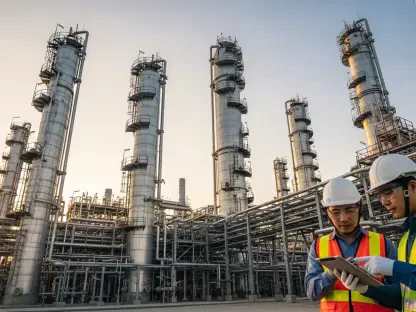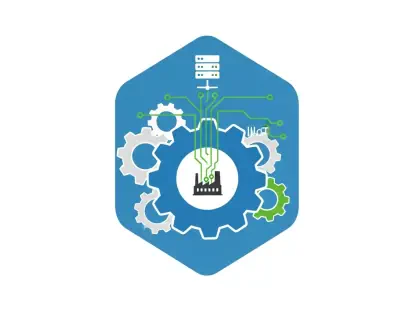The manufacturing of surgical tools has seen a groundbreaking development with the introduction of XJet’s NanoParticle Jetting (NPJ) technology. This innovative approach, which will be showcased at MD&M West 2025, promises to revolutionize the production of metal and ceramic surgical tools, offering significant advantages over traditional methods like CNC machining and metal injection molding.
Technological Advancements in Additive Manufacturing
High-Precision Printing for Medical Devices
XJet’s NPJ technology represents a significant leap in the additive manufacturing domain. By leveraging dispersion ink at the submicron level, NPJ offers high-precision printing for metal and ceramic parts, tailored specifically for the stringent demands of medical devices. This technology allows for the simultaneous jetting of build material and a proprietary support material, both suspended in a liquid carrier and packaged in sealed cartridges. This simultaneous jetting process ensures that the complex geometries often required in medical components can be created with high precision and minimal material wastage.
The process begins with the loading of these sealed cartridges into the NPJ system. Through an integrated ink circulation system, the materials are jetted layer-by-layer with high precision, resulting in parts with densities and surface finishes that are difficult to achieve with traditional methods. The carrier liquid evaporates through a thermal process, leaving the materials ready for support removal and sintering. This capability to achieve layer thicknesses as fine as 7-10 microns enables the creation of intricate medical components with excellent dimensional accuracy, essential for the performance and reliability of surgical tools.
Superior Material Deposition and Fine Particle Control
The NPJ process ensures high-density parts with excellent surface finish and minimal porosity. The system’s integrated ink circulation jets materials layer-by-layer with exceptional precision, which results in minimal waste and maximized material utilization. This precise deposition control is essential in producing the high-performance parts demanded in medical applications. The evaporation of the carrier liquid through a thermal process ensures that the underlying materials are left in an optimal state for further processing, such as support removal and sintering.
One of the significant advantages of NPJ technology is its ability to reduce sintering temperatures. This not only minimizes the thermal impact on the materials, preserving their structural integrity, but also contributes to operational efficiency by reducing energy consumption. The ability to consistently achieve fine layer thicknesses enables the creation of highly intricate components that meet stringent medical standards, whether producing complex geometries or ensuring flawless surface finishes. The precision and control afforded by NPJ technology mark a substantial improvement over traditional additive manufacturing methods, setting a new standard for the industry.
Quality and Efficiency in Surgical Tool Production
Enhanced Quality and Resolution
One notable application of NPJ technology is the production of surgical forceps. Traditionally, these forceps are manufactured in two parts and subsequently assembled, but with NPJ, they can now be produced as a single piece, maintaining high quality and resolution. This capability to produce components as a single piece eliminates the need for subsequent assembly, thereby reducing potential points of failure and ensuring greater structural integrity. Additionally, the high-resolution features of NPJ technology allow for the production of complex stainless-steel tubing with internal cavities and geometries that are otherwise unobtainable with conventional methods.
The use of NPJ technology also extends to producing intricate medical parts that require exceptional precision, such as those used in minimally invasive surgeries. The ability to produce components with such high accuracy enhances the performance of the final surgical tools, ensuring better outcomes for patients. The automated nature of the NPJ process results in shorter production cycles, encompassing printing, washing (support removal), and sintering, with reduced manual intervention. This automation not only speeds up the manufacturing process but also ensures consistency and quality in every piece produced.
Reduced Sintering Temperatures and Energy Consumption
NPJ’s production cycles benefit significantly from the technology’s ability to reduce sintering temperatures and energy consumption. The automated support removal process, combined with the reduced need for manual intervention, contributes to shorter production times and increased efficiency. Lower sintering temperatures are critical as they not only save energy but also reduce the stress on materials, preserving their inherent properties and enhancing the overall quality of the final products.
In contrast to traditional CNC machining, which often results in significant raw material waste, NPJ technology meticulously uses almost the exact amount of required build material. This efficiency is achieved through precisely controlled material deposition, which minimizes waste and optimizes resource utilization. The reduced energy consumption, combined with the efficient use of materials, positions NPJ as a more sustainable and environmentally friendly manufacturing process. These benefits extend beyond the production phase, ensuring that the entire lifecycle of the surgical tools—from manufacturing to end use—is aligned with sustainability goals.
Sustainability and Environmental Impact
Material Efficiency and Waste Reduction
NPJ technology is notably more material-efficient compared to traditional CNC machining. Unlike other additive manufacturing techniques that require excessive support structures, NPJ uses water-soluble supports, reducing waste and environmental harm. The unique water-soluble support materials streamline the support removal process without the need for hazardous chemicals, facilitating a safe and eco-friendly operation. This material efficiency not only reduces waste but also lowers the overall environmental impact of the manufacturing process.
The ability to produce parts with minimal material wastage is particularly important in the context of medical manufacturing, where the demand for high-quality materials is critical. NPJ technology’s efficient material usage not only conserves resources but also reduces costs, making it an economically viable option for producing complex surgical tools. The reduced waste and environmentally friendly support removal process demonstrate how advanced manufacturing technologies like NPJ can contribute to more sustainable industrial practices.
Safer Manufacturing Environment
From a workspace safety perspective, NPJ stands out by eliminating the risk of toxic powder inhalation, a common hazard in powder-based systems. The use of sealed liquid suspensions negates the need for respiratory protective gear and special uniforms, ensuring a cleaner and safer manufacturing environment. This approach aligns with local environmental and medical safety standards, providing a safer workplace for operators. The sealed system also helps maintain a controlled environment, reducing the risk of contamination and ensuring the highest quality output.
The focus on safety extends beyond the immediate manufacturing environment. By eliminating the use of hazardous chemicals in the support removal process and reducing the risk of exposure to harmful substances, NPJ technology ensures that the entire production process is safer for both workers and the environment. This commitment to safety and sustainability reflects the broader trend in manufacturing towards more responsible and ethical practices, ensuring that the benefits of technological advancements are realized without compromising health or environmental standards.
Compliance and Biocompatibility
Adherence to Medical Safety Standards
XJet’s adherence to biocompatibility requirements through engineered ink formulations significantly enhances its suitability for medical device manufacturing. The precision of the NPJ process ensures that parts are dense and uniform, minimizing the risk of harmful leaching or contamination. This level of quality assurance is essential in the medical field, where the safety and reliability of materials used in surgical tools are paramount. Maintaining comprehensive traceability through every stage—from raw materials to final inspections—further aligns NPJ technology with stringent medical safety standards.
The company’s commitment to complying with biocompatibility standards is evident in the rigorous testing and quality assurance processes incorporated into the NPJ system. This ensures that the final products not only meet but exceed the high standards required for medical applications. By providing a consistent and reliable production method, NPJ technology helps manufacturers meet regulatory requirements and deliver safe, high-quality medical devices to the market.
Quality Enhancements Over Powder-Based Systems
When comparing dispersions to powder-based systems, NPJ provides substantial quality enhancements. Dispersions enable finer particle sizes, better material distribution, and lower sintering temperatures, yielding high-quality parts with superior density and surface finish. This ensures that the final products meet the high standards required for medical applications, providing healthcare professionals with reliable and durable tools. The ability to produce parts with such a high degree of precision and quality is a testament to the advanced capabilities of NPJ technology.
The improvements in material control and deposition provided by NPJ technology result in products that are not only superior in terms of performance but also more reliable and consistent. This reliability is crucial in medical applications, where the quality of the tools can directly impact patient outcomes. By leveraging the advantages of dispersion-based additive manufacturing, NPJ technology sets a new benchmark for quality and performance in the production of metal and ceramic surgical tools.
Conclusion
XJet’s NPJ technology offers a transformative approach to manufacturing high-precision, high-quality, and sustainable metal and ceramic surgical tools. It not only challenges traditional methods like CNC machining and metal injection molding but also unlocks new design possibilities previously unattainable. MD&M West 2025 will provide a substantial platform for XJet to showcase these advancements, potentially revolutionizing the medical device manufacturing industry. The manufacturing of surgical tools has taken a groundbreaking leap forward with the introduction of XJet’s NanoParticle Jetting (NPJ) technology. This cutting-edge innovation, which will be a highlight at MD&M West 2025, offers substantial benefits over traditional methods like CNC machining and metal injection molding. The NPJ technology is poised to revolutionize the production of metal and ceramic surgical instruments by providing superior precision and efficiency. Unlike conventional techniques, NPJ enables the creation of highly intricate designs that were previously impossible or extremely difficult to achieve. It also reduces waste, speeds up production time, and lowers costs, making it an attractive option for the medical device industry. The ability to produce complex geometries without the need for expensive molds or extensive post-processing is a game-changer, allowing for rapid prototyping and short-run production. As the healthcare sector continues to advance, NPJ technology stands out as a pivotal development that will likely set new industry standards for surgical tool manufacturing.
